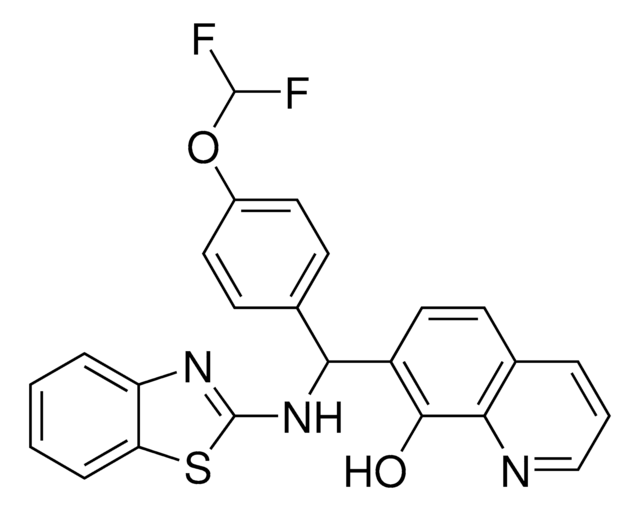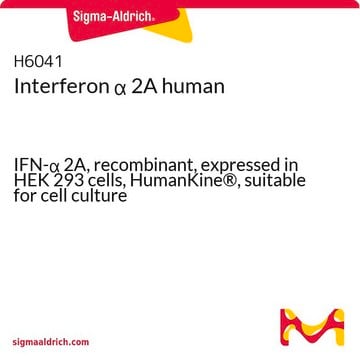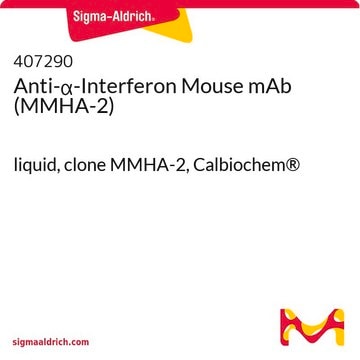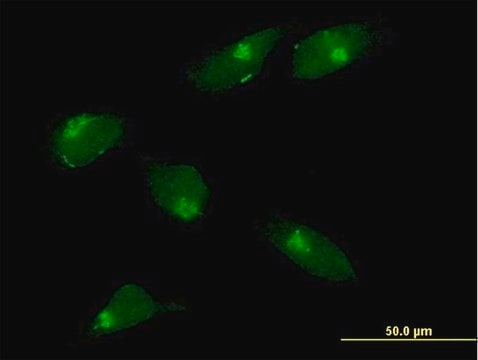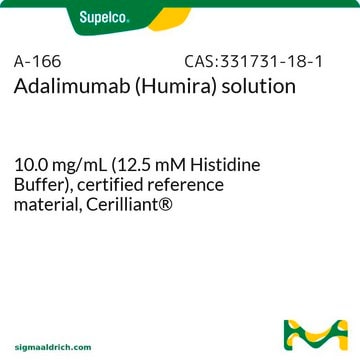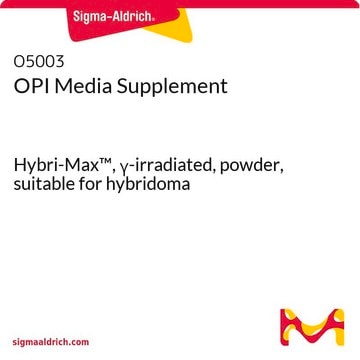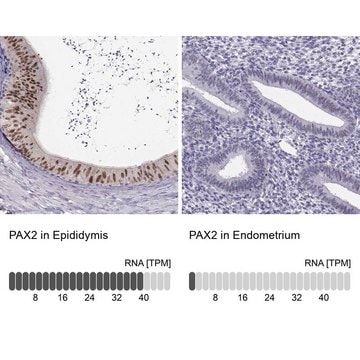SML1866
KIN1408
≥98% (HPLC)
同義詞:
7-((4-(Difluoromethoxy)phenyl)(5-methoxybenzo[d]thiazol-2-ylamino)methyl)quinolin-8-ol, 7-[[4-(Difluoromethoxy)phenyl][(5-methoxy-2-benzothiazolyl)amino]methyl]-8-quinolinol
登入查看組織和合約定價
全部照片(1)
About This Item
經驗公式(希爾表示法):
C25H19F2N3O3S
CAS號碼:
分子量::
479.50
MDL號碼:
分類程式碼代碼:
12352200
NACRES:
NA.77
推薦產品
品質等級
化驗
≥98% (HPLC)
形狀
powder
顏色
white to beige
溶解度
DMSO: 30 mg/mL, clear
儲存溫度
2-8°C
SMILES 字串
OC(C(N=CC=C1)=C1C=C2)=C2C(C3=CC=C(OC(F)F)C=C3)NC4=NC5=C(S4)C=CC(OC)=C5
InChI 密鑰
YSGBFDHVEQJPPX-UHFFFAOYSA-N
生化/生理作用
KIN1408 is a small molecule that targets factors at or above the level of MAVS in the RLR signaling pathway to drive IRF3 activation (IRF3 nuclear translocation ECmax = 5 μM in 20 h; Huh7 cells) without significant cytotoxicity (50 μM/20 h in Huh7 or 20 μM/36 h in HEK293 cultures). KIN1408 induces cellular transcription of innate immune genes (Eff. conc. 1.25-20 μM in 20 h; PMA-differentiated THP-1 cells) in a MAVS- and IRF3-dependent manner and exhibits broad-spectrum anti-viral activity (Eff. conc. 1-5 μM), including dengue virus 2 (DV2; Huh7), influenza A (IAV H3N2; HEK293), RSV (A2 strain; HeLa), Ebola (EBOV strain Zaire; HUVECs), Nipah virus (NiV; HUVECs), and Lassa virus (LASV; HUVECs). MAVS signaling activation upon Zika virus infection or KIN1408 treatment is reported to result in pTBK1 mitochondria relocalization and caspase 3-mediated apoptosis in human neuroepithelial stem (NES) cells.
KIN1408 is a small molecule that targets factors at or above the level of MAVS in the RLR signaling pathway.
危險聲明
防範說明
危險分類
Aquatic Chronic 4
儲存類別代碼
11 - Combustible Solids
水污染物質分類(WGK)
WGK 3
閃點(°F)
Not applicable
閃點(°C)
Not applicable
Marco Onorati et al.
Cell reports, 16(10), 2576-2592 (2016-08-29)
The mechanisms underlying Zika virus (ZIKV)-related microcephaly and other neurodevelopment defects remain poorly understood. Here, we describe the derivation and characterization, including single-cell RNA-seq, of neocortical and spinal cord neuroepithelial stem (NES) cells to model early human neurodevelopment and ZIKV-related
R R Green et al.
Genomics data, 7, 290-292 (2016-03-17)
The recognition of pathogen associated molecular patterns (PAMPs) by pattern recognition receptors (PRR) during viral infection initiates the induction of antiviral signaling pathways, including activation of the Interferon Regulator Factor 3 (IRF3). We identified small molecule compounds that activate IRF3
Sowmya Pattabhi et al.
Journal of virology, 90(5), 2372-2387 (2015-12-18)
The cellular response to virus infection is initiated when pathogen recognition receptors (PRR) engage viral pathogen-associated molecular patterns (PAMPs). This process results in induction of downstream signaling pathways that activate the transcription factor interferon regulatory factor 3 (IRF3). IRF3 plays
我們的科學家團隊在所有研究領域都有豐富的經驗,包括生命科學、材料科學、化學合成、色譜、分析等.
聯絡技術服務